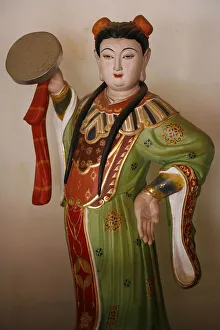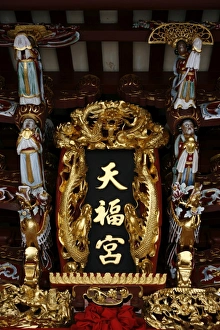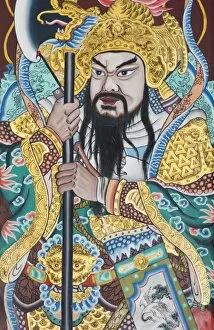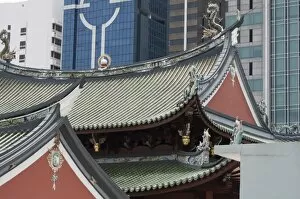Thian Hock Keng Collection
Thian Hock Keng: A Sacred Haven in Singapore's China Town Immerse yourself in the rich cultural tapestry of Singapore's China Town as you step into Thian Hock Keng
All Professionally Made to Order for Quick Shipping
Thian Hock Keng: A Sacred Haven in Singapore's China Town Immerse yourself in the rich cultural tapestry of Singapore's China Town as you step into Thian Hock Keng, a Taoist temple that stands as a testament to the city-state's vibrant heritage. Located in the heart of bustling China Town, this architectural marvel is not only an iconic landmark but also a spiritual sanctuary for believers and visitors alike. As you enter the main prayer hall, your eyes are immediately drawn to the magnificent altar dedicated to Mazu, the revered sea goddess. Adorned with intricate carvings and delicate porcelain figurines, it exudes an aura of divine grace and tranquility. Devotees come here seeking blessings for safe voyages and protection from calamities at sea. Built by early Chinese immigrants in 1821, it has witnessed centuries of devotion and reverence. Its ornate roof tiles, elaborate woodwork, and traditional Chinese motifs reflect the exquisite craftsmanship of its time-honored construction. Every corner whispers stories of faith passed down through generations. Beyond its religious significance lies Thian Hock Keng's role as a cultural hub within Singapore's diverse society. It serves as a meeting point for locals who gather during festivals such as Lunar New Year or Mid-Autumn Festival to pay homage to their ancestors and celebrate their shared heritage. The temple also offers respite from the hustle and bustle outside its walls. Step into its serene courtyard adorned with lush greenery where one can find solace amidst urban chaos. The tranquil atmosphere invites contemplation while providing an escape from modern-day stresses. Thian Hock Keng stands tall as a symbol of unity among different ethnic communities residing in Singapore. It serves as a reminder that despite our differences, we can all coexist harmoniously under one roof – just like how people from various backgrounds come together within these sacred walls.









